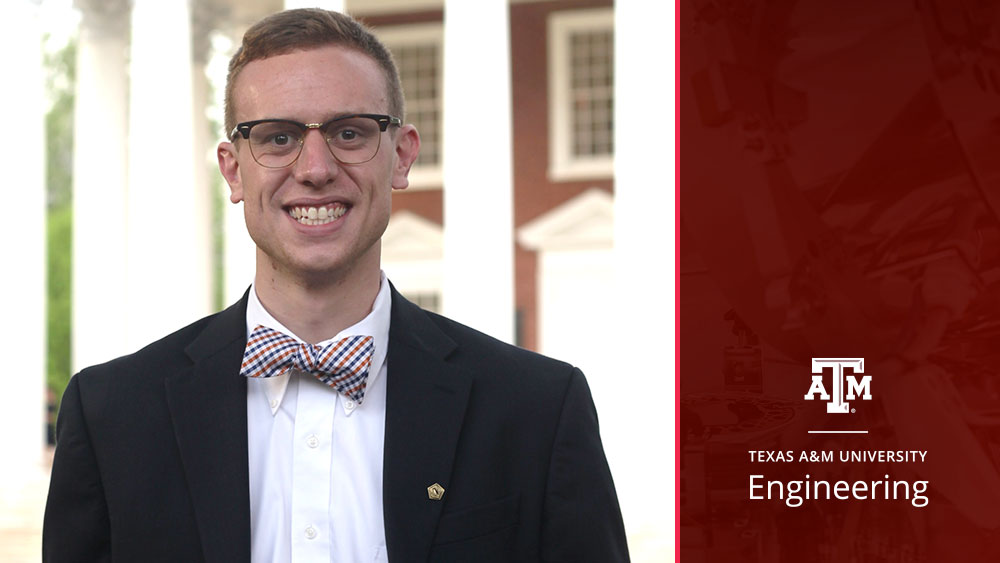
Paul Burke, a doctoral student in the Department of Aerospace Engineering at Texas A&M University, was one of 25 winners selected to have their submission to an idea competition published at a symposium hosted by the National Academies of Sciences, Engineering and Medicine.
The symposium “Imagining the Future of Undergraduate STEM Education” brought together innovators in higher education, policymakers, funders and representatives from associations and industry to discuss ambitions and next steps for the future of STEM (science, technology, engineering and math) education. Contributing to this conversation were Burke and the other winners’ responses to the competition’s question: What should undergraduate STEM education look like in 2040 and beyond to meet the needs of students, science and society?
Burke’s submission titled “The Democratization and Future Ubiquity of STEM Education” (available here), promotes a future where STEM education is widely accessible, takes an interdisciplinary approach and cultivates a society of lifetime learners.
“I have strong feelings about the future of STEM education and entered the idea competition as a way to express these ideas and contribute to the conversation,” said Burke.
One thing Burke is passionate about is the priority of interdisciplinary coursework and personalized degree planning. “We all know STEM majors have little room for nontechnical electives, but sometimes it is the course outside of your department that gives you a huge insight into the world around you that you may not have known otherwise.”
In his paper, Burke also highlights the accessibility of online learning and the critical value it will provide as technology continues to revolutionize the world.
“Whether it is ambitious high schoolers taking open coursework, self-taught programmers or factory workers whose jobs have been automated and are learning new skills, we are all STEM students,” said Burke. “To quote the last line of my paper, ‘In 2040, the students of the past will again be the students of the present. A lifetime of learning will be expected to keep up with the rapid, unimaginable advances of the future.’”
The winners of the competition were invited to attend the symposium and participate in discussions. Burke, whose aspirations are to enter academia after graduation, viewed it as an opportunity to continue learning about ways he can aid students in their educational pursuits and learn from leaders in the field who are already shaping the future of STEM education.
“I hope to take what I have learned from this experience and put it into practice,” he said. “Last year, I completed the Texas A&M Academy for Future Faculty, and I hope to use what I learned from the symposium and idea competition to foster a community of graduate students here at Texas A&M and across the country who are interested in faculty roles.”